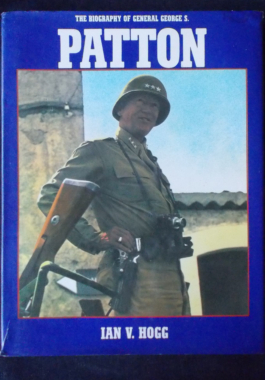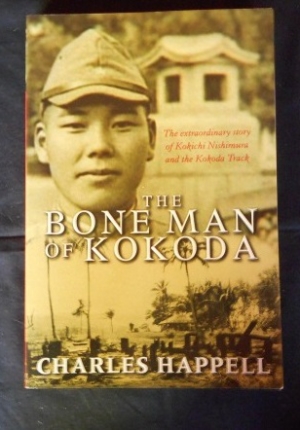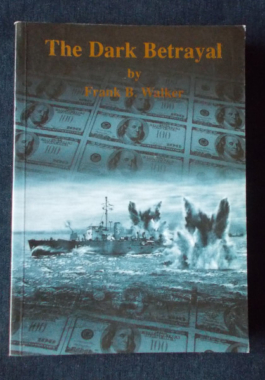-
 June, 1942. Johnnie Houlton has arrived in Britain from New Zealand under the Empire Training Scheme only a few months before. From then on and for the next few years, he was almost constantly in action or seeking action with 485 (NZ) Spitfire Squadron. He volunteered for service in Malta and sharply describes the drama of the convoy that took him there and the five months of siege conditions on the island. Houlton vividly recalls the atmosphere and the incidents of the air war from a pilot's-eye view, together with the development and technique of fighter operations - covering daylight bombing missions, low-level bombing and strafing and the formation of the Second Tactical Air Force in support of land forces. Illustrated with black and white photographs.
June, 1942. Johnnie Houlton has arrived in Britain from New Zealand under the Empire Training Scheme only a few months before. From then on and for the next few years, he was almost constantly in action or seeking action with 485 (NZ) Spitfire Squadron. He volunteered for service in Malta and sharply describes the drama of the convoy that took him there and the five months of siege conditions on the island. Houlton vividly recalls the atmosphere and the incidents of the air war from a pilot's-eye view, together with the development and technique of fighter operations - covering daylight bombing missions, low-level bombing and strafing and the formation of the Second Tactical Air Force in support of land forces. Illustrated with black and white photographs. -
 The story closely follows key events of the Xinhai Revolution, with focus on Huang Xing and Sun Yat-sen. It begins with the Wuchang Uprising of 1911 and follows through historical events such as the Second Guangzhou Uprising on 27 April 1911, the deaths of the 72 martyrs, the election of Sun Yat-sen as the provisional president of the new Provisional Republic of China, the abdication of the last Qing dynasty emperor Puyi on 12 February 1912, and Yuan Shikai becoming the new provisional president in Beijing on 10 March 1912. Also known as Xinhai Revolution and 1911.
The story closely follows key events of the Xinhai Revolution, with focus on Huang Xing and Sun Yat-sen. It begins with the Wuchang Uprising of 1911 and follows through historical events such as the Second Guangzhou Uprising on 27 April 1911, the deaths of the 72 martyrs, the election of Sun Yat-sen as the provisional president of the new Provisional Republic of China, the abdication of the last Qing dynasty emperor Puyi on 12 February 1912, and Yuan Shikai becoming the new provisional president in Beijing on 10 March 1912. Also known as Xinhai Revolution and 1911. -

Patton's aggression and theatrical personality made his units the most successful and efficient and he believed that it should be his Army that should lead the Allied attacks. This brought him into constant conflict with Eisenhower and Montgomery, with Patton doing nothing to hide his belief that he would win the war if properly supported. He expected the same aggression from his men and was probably the best American field commander in the European theatre.
-

Kokichi Nishimura was a member of the 2nd battalion, 144th regiment of the Japanese Imperial Army. In 1942 he fought every foot of the Kokoda Track as the Japanese attempted to take Port Moresby and was the only man from his platoon to survive the campaign. Finally he retreated, wounded and starving, leaving thousands of his comrades buried in shallow graves along the Track. He promised that he would one day return to them and bring them home to Japan for proper burial. He married, had three children and started an engineering business which prospered. But his driving ambition was to return to New Guinea to keep his promise. In 1979, nearing retirement age, he shocked his family by giving his business to his sons, his house and all his assets to his wife and he returned to New Guinea to begin his search for the remains of Japanese soldiers. For the next 25 years Nishimura lived alone in huts and tents along the Kokoda Track and using a mattock, a shovel, a metal detector and an indomitable will, he found the bones of hundreds of his comrades and also forged a new comradeship and new purpose in helping the poverty-stricken Papuans he worked amongst. An incredible story. Illustrated with black and white photographs.
-
 After Singapore falls to the Japanese early in 1942, 70 000 prisoners - including 15, 000 Australians - are held as POWs at the notorious Changi prison, Singapore. To amuse themselves and fellow inmates, a group of sportsmen - led by the indefatigable and popular `Chicken' Smallhorn - created an Australian Football League, complete with tribunal, selection panel, umpires and coaches. The final game of the one and only season was between `Victoria? and the `Rest of Australia', which attracted 10, 000 spectators and a unique Brownlow Medal was awarded in this unlikely setting under the curious gaze of Japanese prison guards. Meet the main characters behind this spectacle: Peter Chitty, the farm hand from Snowy River country with unfathomable physical and mental fortitude, and one of eight in his immediate family who volunteered to fight and serve in WW2; `Chicken' Smallhorn, the Brownlow-medal winning little man with the huge heart; and `Weary' Dunlop, the courageous doctor, who cares for the POWs as they endure malnutrition, disease and often inhuman treatment. Illustrated with black and white photographs.
After Singapore falls to the Japanese early in 1942, 70 000 prisoners - including 15, 000 Australians - are held as POWs at the notorious Changi prison, Singapore. To amuse themselves and fellow inmates, a group of sportsmen - led by the indefatigable and popular `Chicken' Smallhorn - created an Australian Football League, complete with tribunal, selection panel, umpires and coaches. The final game of the one and only season was between `Victoria? and the `Rest of Australia', which attracted 10, 000 spectators and a unique Brownlow Medal was awarded in this unlikely setting under the curious gaze of Japanese prison guards. Meet the main characters behind this spectacle: Peter Chitty, the farm hand from Snowy River country with unfathomable physical and mental fortitude, and one of eight in his immediate family who volunteered to fight and serve in WW2; `Chicken' Smallhorn, the Brownlow-medal winning little man with the huge heart; and `Weary' Dunlop, the courageous doctor, who cares for the POWs as they endure malnutrition, disease and often inhuman treatment. Illustrated with black and white photographs. -

It was at Dunkirk that Toosey's charisma and fortitude were first noted and in 1941 he was given command of an artillery regiment. Sent to fight in the Far East he and his men were embroiled in the battle for Singapore and were taken prisoner after the island's fall in 1942. The Japanese, scornful of the Allied forces for surrendering, determined to make use of the new workforce now at their disposal. Toosey was sent to Thailand to command the 'bridge camp' at Tamarkan where he was ordered to supervise the construction of two railway bridges over the river Khwae Mae Khlong. Starvation rations and harsh working conditions mean that dysentery and cholera were rife and a quarter of the 60,000 prisoners working on the Burma Railway wold perish. Toosey insisted on high standards of hygiene and discipline, giving back the men their self-respect and making himself a buffer for the cruel excesses if the guards. The author is Toosey's grand-daughter. Illustrated with black and white photographs and sketches.
-

Ken Bartlett, an Australian sailor in a corvette in the Atlantic, took on a cloak-and-dagger mission into Nazi Germany. It was the start of a long and dangerous trail that led him to suspect that Allied firms traded with Germany and Japan during World War II. After arduous service in corvettes in both the Atlantic and the Pacific, he returned to his job as a journalist and followed the scent of the treason trade. This proved even more hazardous, with the FBI, CIA and thugs hired by the double-dealers out to get him. He achieved a victory - yet it was bitter.
-
 As we crowded the decks off Gallipoli and watched the first shells crash into Turkish soil... Trooper Ion L. Idriess of the 5th Australian Light Horse began keeping a diary. Over the next three years as the regiment moved onto Palestine, stormed Beersheba and pushed into the Sinai, his diary grew and became one of the most vivid pieces of war narrative ever written. Unconcerned with grand strategy or moralisations, Idriess records the realities of his war - maggot-ridden trenches crowded with the corpses of his mates, the good friendships, the bad tucker, the heat, the dust, the boredom of desert patrols - and always the fighting and his reactions to it, which reveal far better than mere description, since he was there. The rifle fire grew to a roar that drowned the voice of the man next to me. I felt as a stone age man might feel if volcanoes all around him suddenly spat life and roared...Believed to be Idriess' earliest work.
As we crowded the decks off Gallipoli and watched the first shells crash into Turkish soil... Trooper Ion L. Idriess of the 5th Australian Light Horse began keeping a diary. Over the next three years as the regiment moved onto Palestine, stormed Beersheba and pushed into the Sinai, his diary grew and became one of the most vivid pieces of war narrative ever written. Unconcerned with grand strategy or moralisations, Idriess records the realities of his war - maggot-ridden trenches crowded with the corpses of his mates, the good friendships, the bad tucker, the heat, the dust, the boredom of desert patrols - and always the fighting and his reactions to it, which reveal far better than mere description, since he was there. The rifle fire grew to a roar that drowned the voice of the man next to me. I felt as a stone age man might feel if volcanoes all around him suddenly spat life and roared...Believed to be Idriess' earliest work. -
 Using secret American, British and German sources previously unavailable, this story appears almost incredible. Few people know that behind all of the great decisions- and many of the small ones - of the past two world wars, lay information gathered from secret intelligence, either from agents or intercepted coded messages. At the time of writing the whole structure was still classified, yet Farago was able to obtain German records that had been lost for a generation, revealing a vast espionage network strung across Britain and the United States. He also shows how the Germans mopped up the British espionage network in 1939, and how it was painfully and carefully rebuilt by a new generation of British intelligence officers who cracked the German codes and fed false information to the Abwehr throughout the war, eventually contributing to the defeat of the Axis powers.
Using secret American, British and German sources previously unavailable, this story appears almost incredible. Few people know that behind all of the great decisions- and many of the small ones - of the past two world wars, lay information gathered from secret intelligence, either from agents or intercepted coded messages. At the time of writing the whole structure was still classified, yet Farago was able to obtain German records that had been lost for a generation, revealing a vast espionage network strung across Britain and the United States. He also shows how the Germans mopped up the British espionage network in 1939, and how it was painfully and carefully rebuilt by a new generation of British intelligence officers who cracked the German codes and fed false information to the Abwehr throughout the war, eventually contributing to the defeat of the Axis powers.


